Last Updated on June 20, 2024 by Michelle
I always thought fall was the best time to ID any tree. But just a few months ago I learned that identifying sugar maples in spring is easier than I ever imagined. Which means spring is the ideal time to start preparing for the best maple syrup winter ever.
And, yes, we make some amazing maple syrup on our New England farm every winter. For more details on how to make your own backyard maple syrup, peruse these posts.
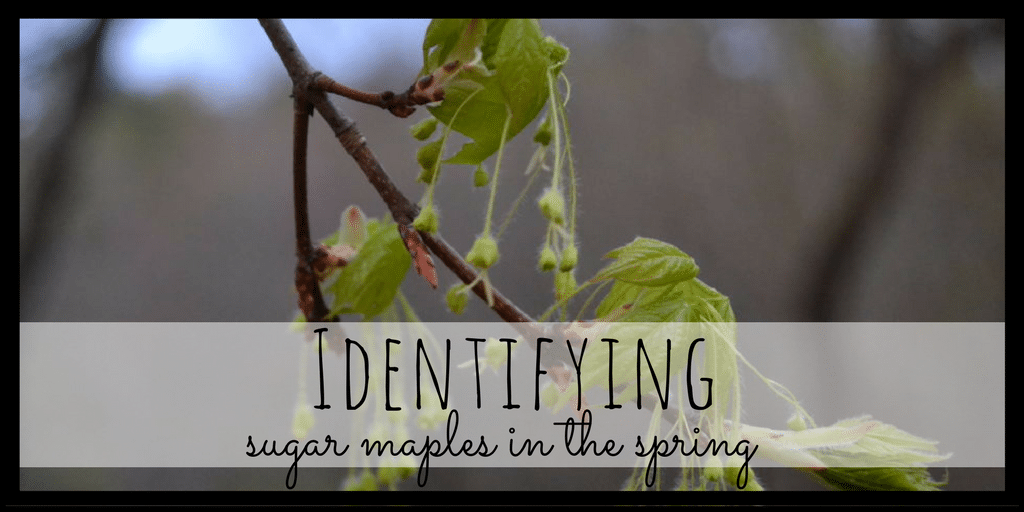
DISCLOSURE: This post contains affiliate links.
Before we dive into this topic of maple ID in the spring, I wanted to ask if you’d please consider helping me support sugarmaking education worldwide with every purchase of the SoulyRested Swag. You’ll find the latest designs right here (like the one I’m wearing here) .
I first got the idea to try my hand at springtime maple ID when I read The Sugarmaker’s Companion, which I reviewed here.
Michael Farrell explains that “approximately every four years, sugar maples will produce a bumper seed crop.” (p. 149) In other sources, I’ve read that bumper crops show up, on average, every 4 to 7 years. Since this is my first year of sugar maple spring ID, I have no comparison. So I truly don’t know if this year in New England the sugar maples were so easy for me to ID because it was indeed a bumper year or not. I guess I’ll have to share an update next spring.
Years later, I went on to write my own book about making maple syrup, specifically for backyard sugarmakers (Michael’s book is written for big-time sugarmakers, who are making hundreds of gallons of syrup a year). My book, Sweet Maple, is filled with all the information I learned doing it myself, though lots of trial and too many errors. Sweet Maple–available whereever books are sold–is also filled with all the details and recipes your heart desires if you’ve ever wanted to replace refined sugar with maple. Go here for a peek inside my book. Or order a copy for yourself right here.
But if you’re itching to make syrup but don’t have a grove of sugar maples, check out this list I’ve put together, after many years of research, of 31 trees that can be used for sugarmaking.
Look for the bright-neon-green buds.
Every glance out any window of our old farmhouse, every walk in the woods, and every long drive along back roads of the Granite State, I gleefully noticed the beautiful, bright-neon-green buds of sugar maples this time of year.
On our frequent long drives north on I-89 this spring I was shocked at how obvious–and prevalent–the sugar maple groves were along the long stretch of interstate.
In this video, I point out a few sugar maples in our front field.
Unfortunately, the brilliant neon green color of the maple buds isn’t very obvious in the video. This picture gives you a better idea of the true brilliance of the sugar maple’s spring buds, followed by an up close picture of the buds. (This is the tree that is behind me in the video, seen from another angle.)
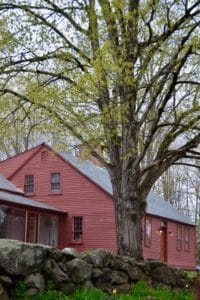
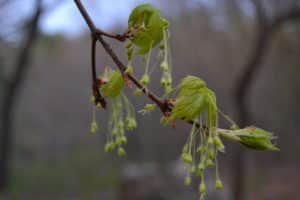
Truly, the neon green color of the buds and new leaves of the sugar maple are so distinctive, once you start to see it from a distance, you will know a sugar maple from afar. The only other even slightly similar colored buds are the birch trees, but their white bark distinguishes them in a heartbeat. And birch trees are typically shorter and more round shaped overall than a maple tree. If you’re not certain if the neon green color you see is indeed a grove of sugar maples, getting a glimpse of the unique dangling clusters of blooms will reassure you.
Look for opposite branches.
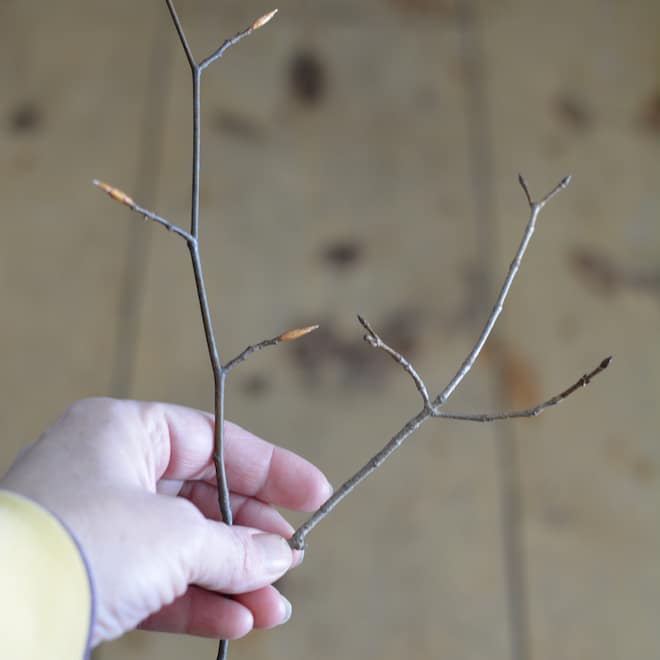
More information for Sugarmakers.
Of course, simply knowing how to identify a sugar maple is just the first step towards amazing DIY, backyard maple syrup. Turns out, I’ve written about all the steps, right here on SoulyRested. Read about how to mark your trees that you want to tap, when to start gathering supplies, and how to drill your taps. Discover if you live where you can tap for sap, read 7 questions you should know the answer to before you tap your trees, and find out how to save hundreds with your backyard syrup making. Here I outline our complete step-by-step process of making syrup, and here I explain when to stop tapping maple trees. I also explain what is my favorite maple product we make on our homestead and why. (I bet you’ll be surprised!)
But feel free to start your maple-infused reading right here. Read through and download my totally free, no-strings-attached ebook Maple Goodness by just clicking this link or clicking on the image of the book to the right.
Plus, you’ll want to keep an eye out for my new book that’s currently in production: Sweet Maple. In the meantime, download my two seriously sweet free eBooks about maple as soon as you sign up!–>
Take a second to save these posts for later.
I know I come across helpful pointers online all the time that I plan on coming back to, only to realize later that I didn’t save the information, or I saved it but don’t remember where I saved it. So I wanted to save you the 20-minute heartache of floundering around for this muli-part DIY syrup series when you need it. You can PIN each post right here.
PIN Part 1, (or read it here) about identifying and marking your trees in the fall and gathering some of your preliminary supplies
PIN Part 2,(or read that one here) about when, where, and how to drill your taps. This post also covers how to know if you live where you can tap successfully and 7 questions you need to know the answers to before you tap your trees.
PIN Part 3,(or read it here) about a reverse osmosis filter–what it is, how to build one yourself, and how it can save you hundreds a year in your backyard syrup making process.
PIN Part 4, (or read it here)–a step-by-step guide to boiling your sap.
PIN Part 5, a guide to knowing the perfect time to stop tapping your maple trees. Don’t make the mistake that I did and assume you should keep on tapping until the sap stops flowing! (Go here to read that one.)
PIN Part 6, a guide to help you ID maple trees, in every season. (Or read it here.)
It was a cold, difficult winter for me, and I’m not even talking about the weather… So I wasn’t sad to pack away our sweet, magical, syrup-making equipment and usher in a new season filled with neon green blooms.
Introduce a child to the joys of nature.
Once you got the hang of it, you may realize you know a child who would love identifying trees, as well as insects, flowers, birds, and more that they discover in nature. If so, glance at this post and discover what our family has been doing for almost 2 decades to encourage a love of nature study while creating an amazing family heirloom.
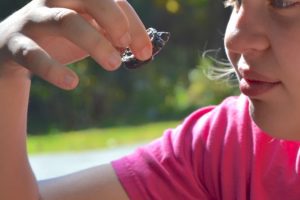

Important links.
Glance at my list of products we use here on our little sugarbush to make maple syrup.
And visit my friend Tim’s site for the most delicious maple goodness I’ve found anywhere–even bulk size syrup (Tim’s XXL is a one-gallon jug) at the best price I’ve seen anywhere.
More information about Maple Syrup Making:
How backyard sugarmakers save hundreds of dollars every year
The complete list of tappable trees (there are 32!)
Learn how to BAKE with maple syrup!
Out of the ground the LORD God caused to grow every tree that is pleasing to the sight and good for food. Genesis 2:9
If you enjoyed this post, you’ll love being a part of the facebook group I admin. Maple Syrup Making. It’s full of helpful maple enthusiasts like yourself from around the world.
If you’d like to know even more about how to identify a sugar maple, check out this little fb live video I made last fall. (And follow my page; I’d love to see you over there!)
And I have lots of maple-related highlights on my instagram page; hope to see you there too!
I’d love to connect!
To find me in some other neck of the woods, just click any (or every!) icon below:
That video I promised you, about why you should never take your eyes off of boiling sap.–>
PIN this for later! Just click the image below to pin this article.–>
I’d love to connect!
To find me in some other neck of the woods, just click any (or every!) icon below:
And please follow along!
Please take a second to follow along here on SoulyRested to catch up on a few of my memorable mishaps, discover fascinating things about my centuries-old farmhouse, or enjoy the inside scoop on the secrets legit homesteaders might not tell you.
And have you tried my a-MAAHZ-ing Maple Sugar Cookie recipe that’s in my Resource Library?


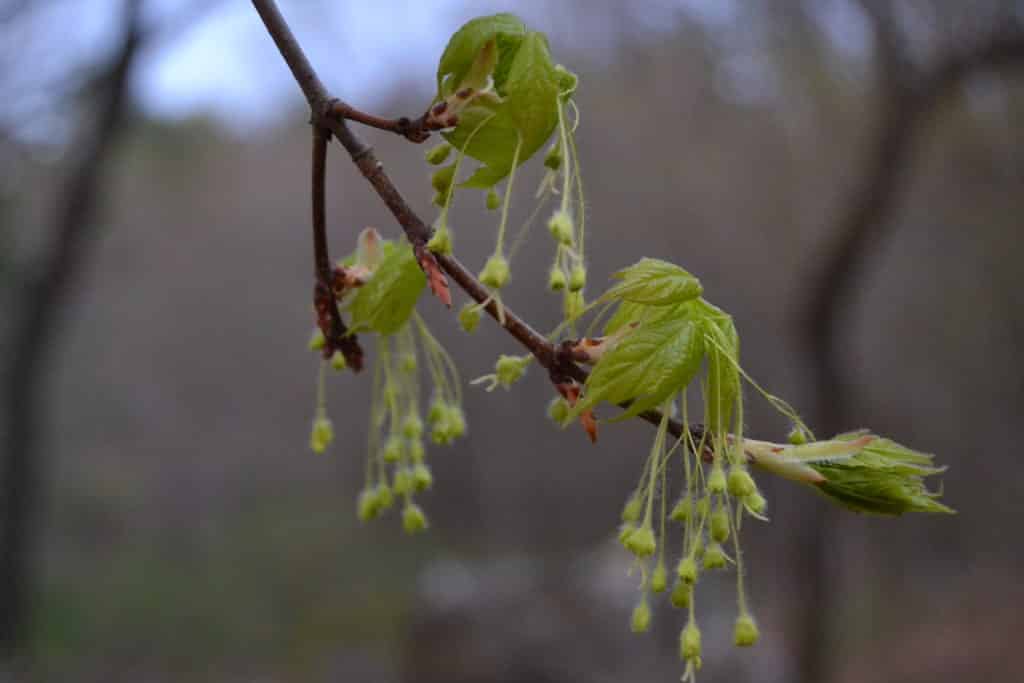
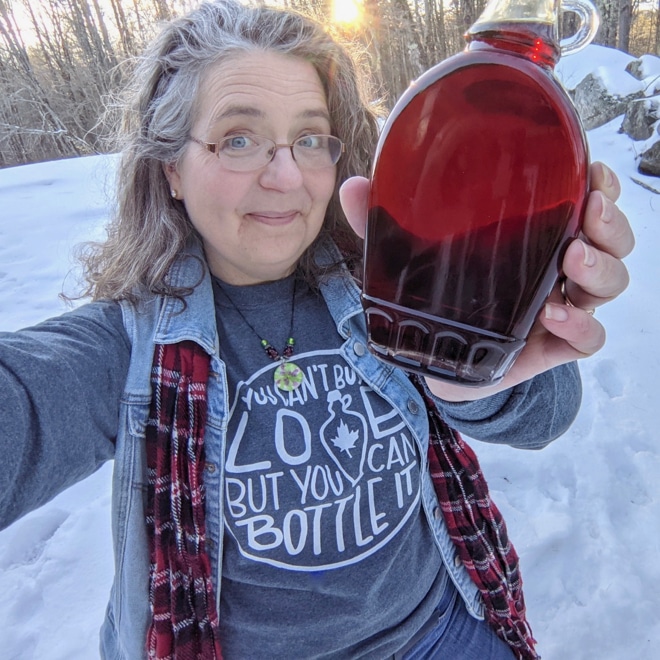


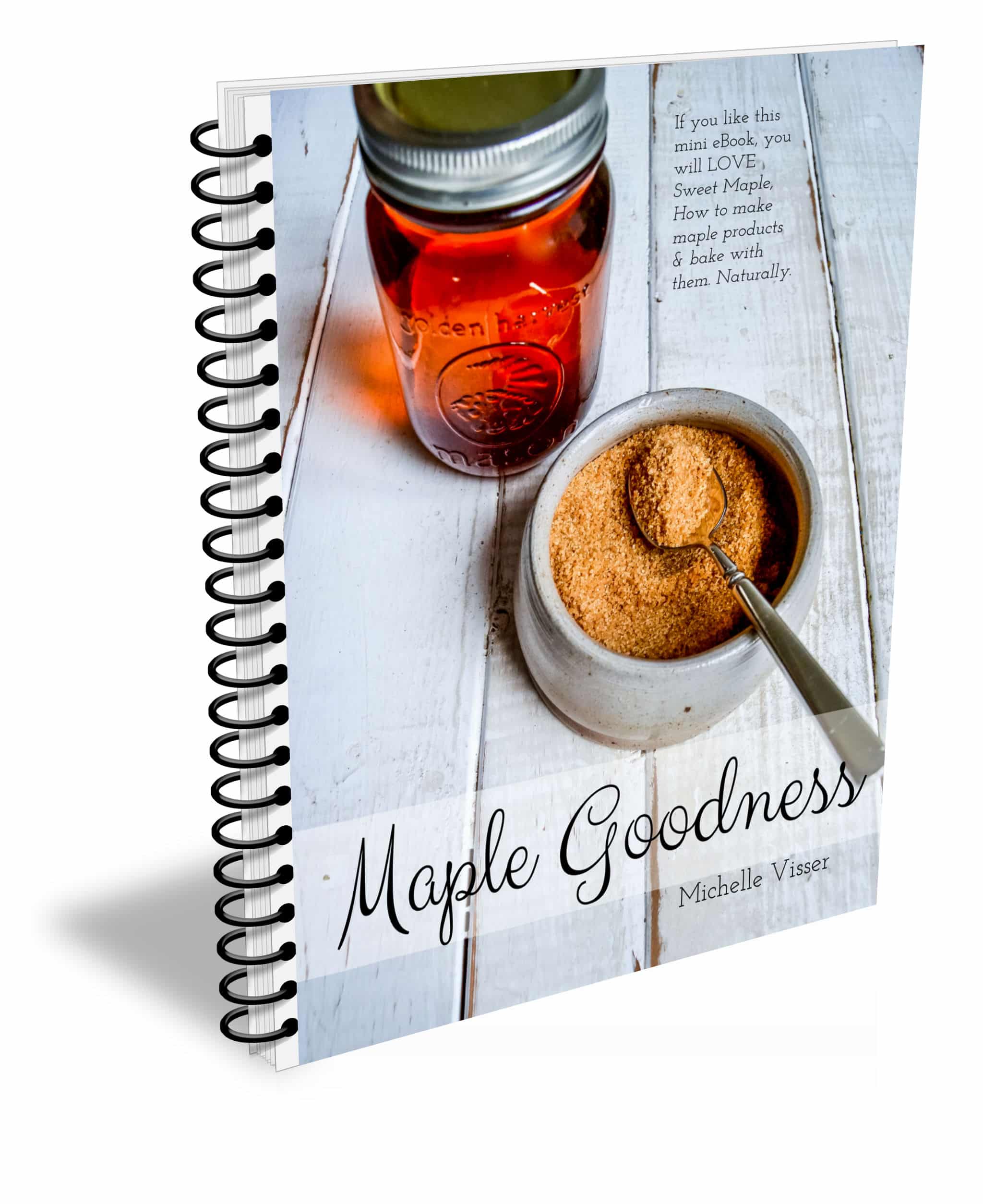

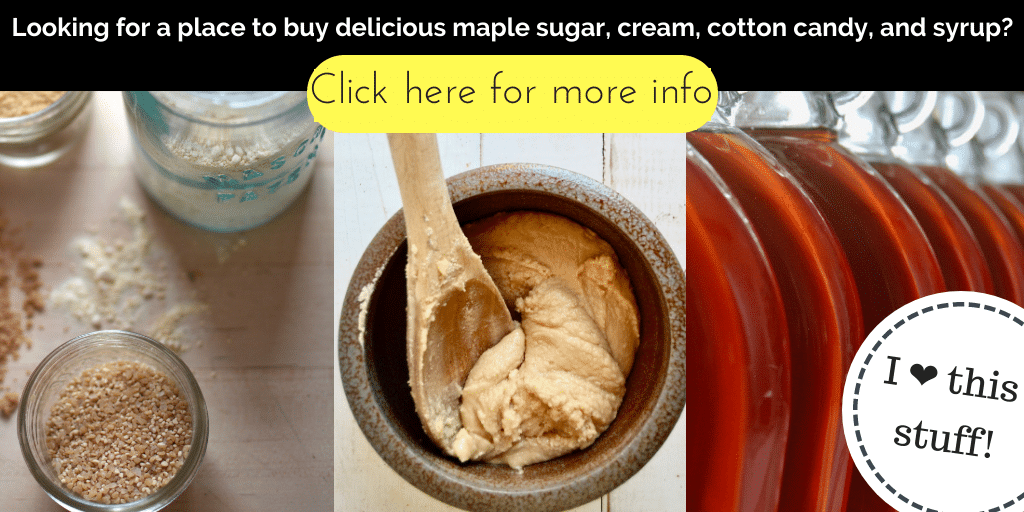





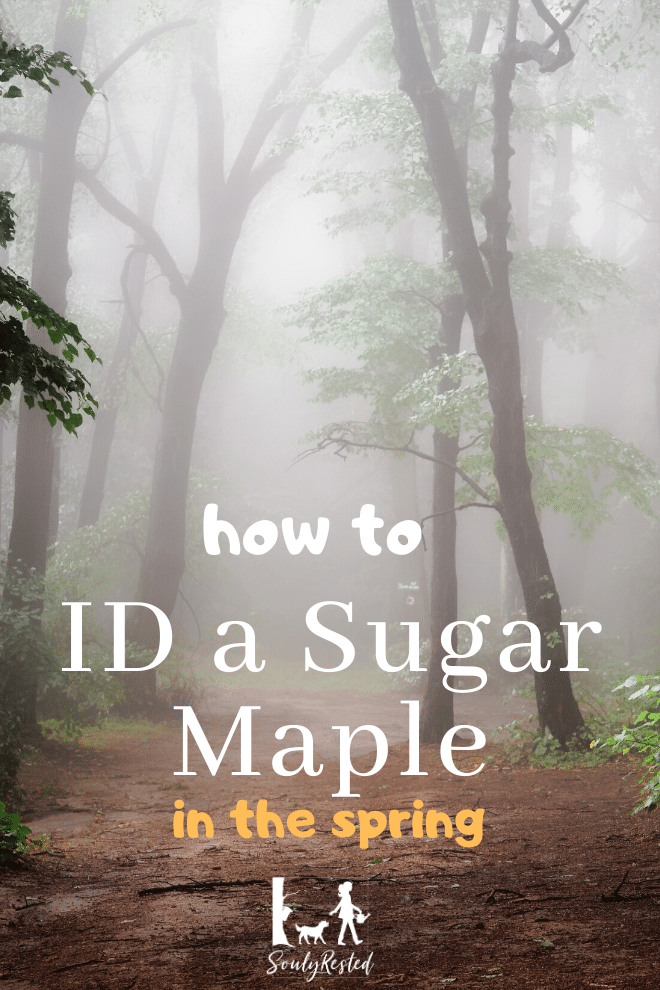
Great information! Thanks for compiling it in one spot! Thanks for sharing on the #WasteLessWednesday blog hop.